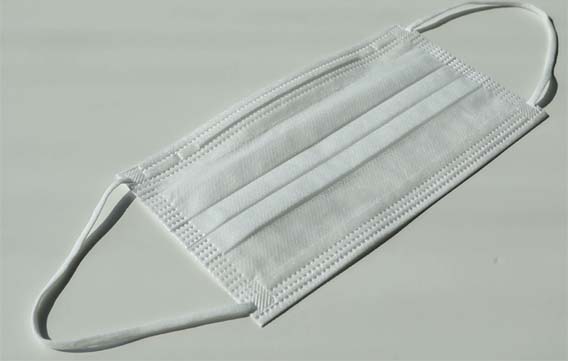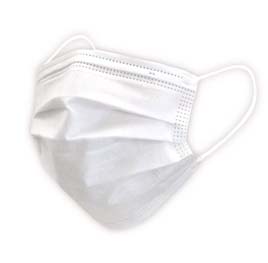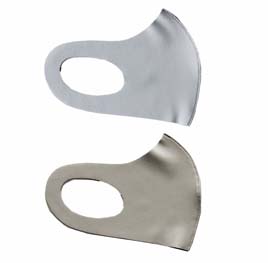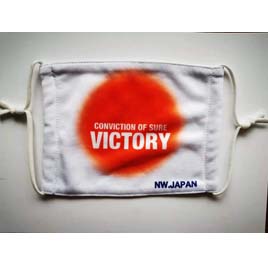
non-woven face mask
- We have 11 years of production experience in masks.
- Mask material is BFE.VFE.PFE 99% or more.
- This mask is designed not only for its performance, but also for its usability.
- A perfect fit that prevents gaps between your face and the mask.
- The 3-layer non-woven structure shuts out micro particles such as virus droplets, dust, and pollen.
- Size is 9.5cm x 17.5cm
NEWWAY's Strengths
Please understand the NEWWAY mask.
Why choose NEWWAY masks?
- NEWWAY has a 100,000-grade clean room. A clean room is a room where air cleanliness is ensured.
- NEWWAY’s masks are of high quality and each mask is inspected one by one. Almost no defective products.
- NEWWAY believes that the essence of the mask business is to supply high-quality masks to the market at low prices and contribute to improving public health.
- NEWWAY’s non-woven masks use high-performance filters with BFE, VFE, and PFE of 99% or higher (tested by the Japan Chemical Fiber Inspection Association).
- Since it is our own factory, we have 6 mask machines. Small lots and short delivery times are available. We can produce masks of multiple sizes.
- We have extensive experience in exporting masks and are qualified for medical masks, so there is no problem in exporting masks.
Tips for purchasing masks
Final manual: Mask

Are masks ineffective in preventing new coronavirus infection?
Acquire appropriate usage and knowledge
Understanding the causes of infectious diseases, viruses and bacteria Before understanding the effectiveness of masks, we will first explain the viruses and bacteria that cause infectious diseases.
Viruses and bacteria cause infections, but they are completely different.
Viruses do not have the ability to reproduce on their own; they parasitize the cells of other organisms and ask the host cells to replicate.
Eventually, the host cell dies due to the large amount of virus, and the virus that escapes from the cell parasitizes other cells and continues to multiply.
On the other hand, since bacteria have a cellular structure, they can multiply by repeating cell division in an environment with adequate nutrients and moisture.
While there are bacteria that invade the human body and cause infections, there are also bacteria in the human body that are necessary to maintain health, such as beneficial bacteria such as Bifidobacterium.
The key point is the size of viruses and bacteria.
The size of viruses is approximately 0.02 to 0.2 μm (micrometers). μm is a unit that represents 1/1000 of mm, and of course cannot be seen with the naked eye.
An electron microscope with higher magnification than an optical microscope is required. Bacteria are larger than viruses, about 1 to 5 μm.
Bacteria are also invisible to the naked eye, but can be seen with a light microscope.
The gap in a typical surgical mask is about 5 μm, so viruses and bacteria are smaller than that, and it is difficult to completely prevent them from entering.
Are masks effective in preventing infectious diseases? So, are masks ineffective in preventing infectious diseases?
I think this is what everyone is most concerned about.
In conclusion, the effect of masks is to prevent virus and bacteria carriers from releasing the source of infection, thereby preventing the spread of infection. As mentioned above, viruses and bacteria are smaller than the gaps in the mask, so it is not possible to completely prevent them from entering.
It will be less effective against airborne infections.
However, it has the effect of preventing “droplets” that are generated when a virus or bacteria carrier coughs or sneezes.
It has a preventive effect against infectious diseases that are transmitted by droplets, such as the new coronavirus infection and influenza.
Droplets contain water and are approximately 5 μm in size, so wearing a mask can reduce the risk of spreading infection.It also prevents you from directly touching your mouth or nose with your fingers that may be contaminated with viruses or bacteria.

Types of masks and correct usage Masks include cloth masks, surgical masks, and N95 masks. ・
Cloth Mask A cloth mask is a mask made of gauze or cotton fabric.
Although they have a certain droplet prevention effect, they have larger gaps than surgical masks or N95 masks, making them less effective.
However, they are easy to wash and can be used multiple times, and you can also make your own if you run out of masks.
It also has excellent moisture retention and heat retention properties.
Be sure to wash your cloth mask thoroughly after using it. ・
Surgical Mask A surgical mask is a medical mask made of non-woven fabric.
In recent years, it has become more popular and is also used as a household mask. Since they are basically disposable, they can be used hygienically.
There are pleated types that flexibly respond to mouth movements and do not slip easily, and three-dimensional types that have space between the mask and the mouth, making it less stuffy to breathe. ・
N95 Mask N95 mask is a particulate mask that has passed the N95 standard of the National Institute for Occupational Safety and Health (NIOSH). Capable of collecting over 95% of particles of 0.3μm. It is used to protect people from outside air that contains microorganisms, so in recent years it has often been used in medical settings to prevent infection.
Because they are highly dense and the gaps are very small, it can be difficult to breathe while going about your daily life while wearing them for long periods of time. ・KN95 mask
This mask has cleared the Chinese national standard GB2626-2006, which is considered to be the same standard as the N95 standard of the National Institute for Occupational Safety and Health (NIOSH). It is expected to have the same effect as an N95 mask.
However, there have been cases in which “defective masks” that do not meet the standards have been distributed, so it is necessary to carefully identify genuine products.
When purchasing, choose one that has passed tests that meet standard values and one that has a structure that fits you.
In addition, knit masks with coarse gaps or bandanas are significantly less effective at preventing droplets, so we recommend using the three types of masks listed above.
How to use a mask correctly For a mask to be fully effective, it must be used correctly.
In order to prevent the spread of viruses and bacteria, it is important to avoid leaving gaps between the mask and your face. Choose a mask that is sized and shaped to fit your face, and adjust the elastic to make it tighter if necessary.
Make sure your nose and chin are not exposed when you wear it. When removing the mask, it is best to fold it so that the part that touched your face is facing inwards and store it in a special mask case.
Don’t leave your mask unattended after use; if it’s a disposable mask, throw it in the trash, or if it’s a washable mask, wash it and keep it clean. It is even more effective if you use a virus removal/sterilization product specifically designed for masks.
Mask production flow https://youtu.be/B4rE2ps7gQ8 Before starting work, workers clean and disinfect their hands and wear protective clothing.
You can enter our clean room and see the automatic mask machine. The first step is to place the three non-woven fabrics and nose bar raw materials into the mask machine.
Next, put the three masks together, make a crease, fold them up and down, and insert the nose bar at the same time. Prick the dots with the wire of the mold.
Thereafter, the mask was cut according to the predetermined size, and the mask body was completed. Arrange the mask bodies one after another and attach the ear straps using heat welding. That’s how you get a complete mask. After that, the workers proceed with one inspection and counting. During the above production process, the team leader inspects quality issues between each process. We strictly control quality. Good masks that have been inspected once are sent to the packaging site. We carry out double inspections at the packaging site. Pull the ear string and check its strength. Finally, we put the good products into bags and small boxes, put them in cardboard boxes, and manage the inventory.



